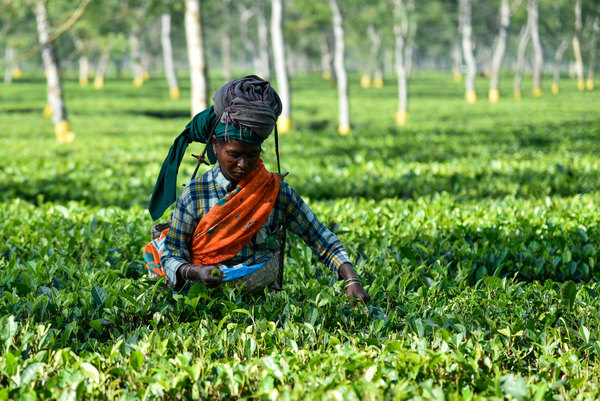Highlighting the use of evidence
I spotted this blog article on Friday morning and sent it on to one of my colleagues, and soon it was sent around all the blog team here at CABI. This whole topic of the use of an icon/logo to highlight the use of peer-reviewed evidence has caused a great deal of discussion and a…
Bamboo socks and bicycles
Is there no end to the usefulness of bamboo? They can now make bamboo socks that stop your feet smelling! The makers claim that they are softer and more durable than cotton and contain a natural odour-eating magic ingredient called “Bamboo-kin” – an anti-microbial agent that kills the organisms that create smelly feet. The cellulose…
Hug fat trees
The ancient tree hunt is on. I heard a story on the radio this morning about a tree, the Fortingall Yew (Taxus baccata) in Perthsire, which is guestimated to be 5000 years old. It was around when Stonehenge was built, had already been standing for 3000 years when the Romans invaded, and is thought to…
Plants uproot and head North
Plants are moving northward to find cooler habitats, so it would seem that the blog I wrote earlier on human assisted migration might be moot – they’re doing it for themselves. Using DNA fingerprinting techniques, a study by Inger Greve Alsos and her colleagues has found that ‘long-distance colonization of a remote arctic archipelago, Svalbard,…
Clouds in my decaf
Whilst sourcing news for AgBiotechNet I came across a story about the genetic modification of coffee – I read on, intrigued. Why on earth would you want genetically modify coffee? Well, the problem is the relatively poor quality of decaf compared to that of fully leaded. During the traditional process of chemical decaffeination a large…
Climate change clock ticking for wild relatives
International Biodiversity Day is here, and CGIAR brings us news that climate change threatens the wild relatives of cultivated potatoes and peanuts. The CGIAR study warns that 61% of wild peanut and 12% of wild potato species could be made extinct over the next half century. This poses a problem for plant breeders and GM…
Hunting both animals and plants
Many people are aware of the negative effects of hunting on the species that are being hunted, especially on large-bodied, slow-reproducing forest vertebrates, but have you ever considered the knock-on effects on the plant community in those same ecosystems? The latest issue of Biotropica (vol. 39, no. 3) features a special section on the ‘Pervasive…
Taking the sting out of nettles
A colleague has just told me that it’s ‘Be Nice to Nettles Week’ – I know it may seem strange to celebrate the merits of such a commonplace plant but the humble nettle has many uses. I have sampled nettle soup and Cornish Yarg wrapped in nettles reputedly to encourage the cheese to ripen (although…
Disturbing Soil Has Disturbing Effects on Forest Carbon
Forests are seen as a major plank in trying to reduce carbon emissions to mitigate climate change. According to the rules of the Kyoto Protocol and of the United Nations Framework Convention on Climate Change, forestry can generate a sink for greenhouse gases that can contribute to meeting the national commitments to emissions reductions. However,…
And how would you like your flowers Madam?
Genetically modified? Yes, GM bouquets could be the future of floristry, with consumers demanding more choice in flower colour, Australian company Florigene are hoping to import and market their GM carnation Moonaqua™. The flower is the lightest shade in Florigene’s Moonseries range being pale lilac in colour, created by modifying genes in the anthocyanin biosynthesis…


